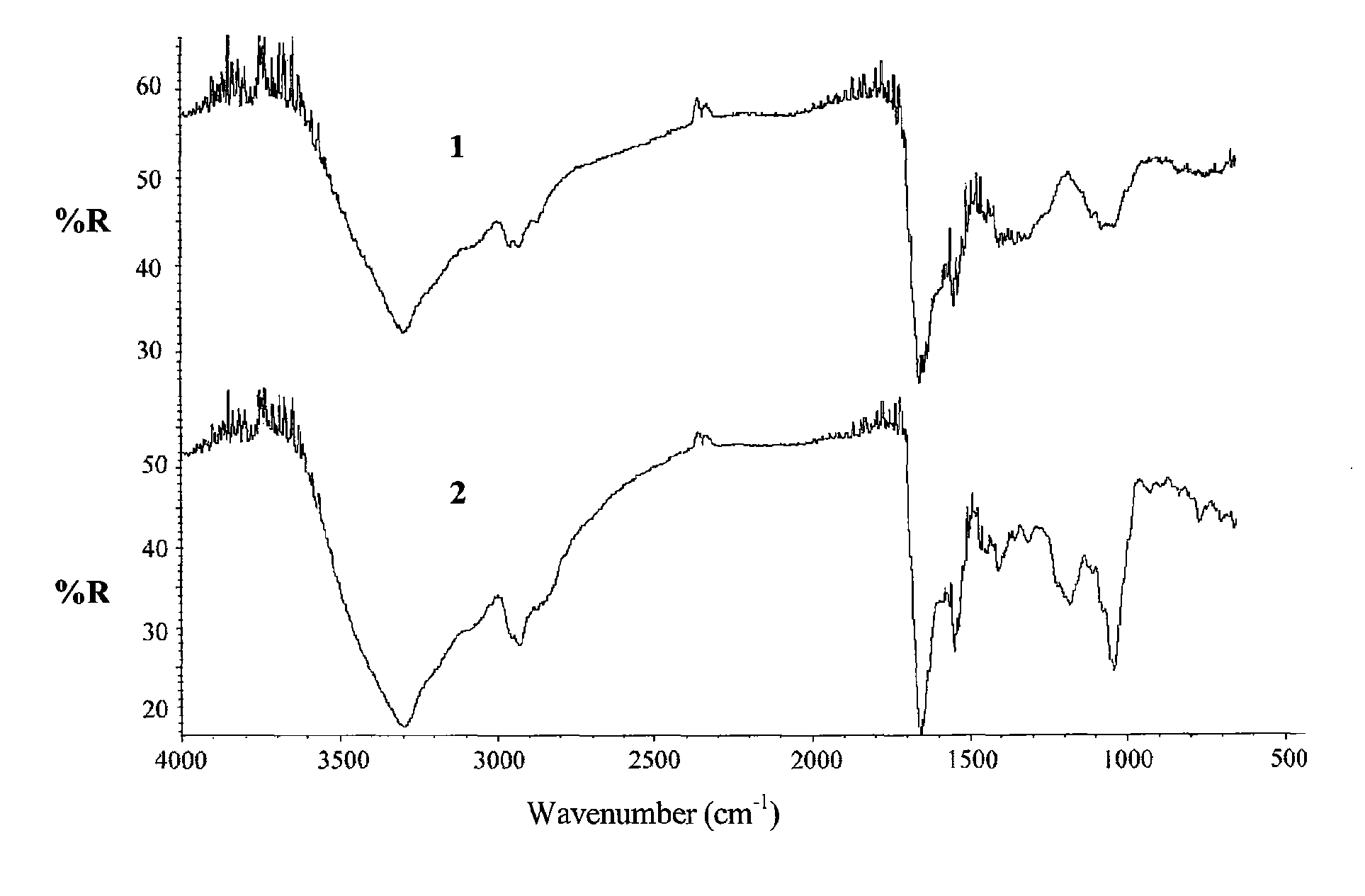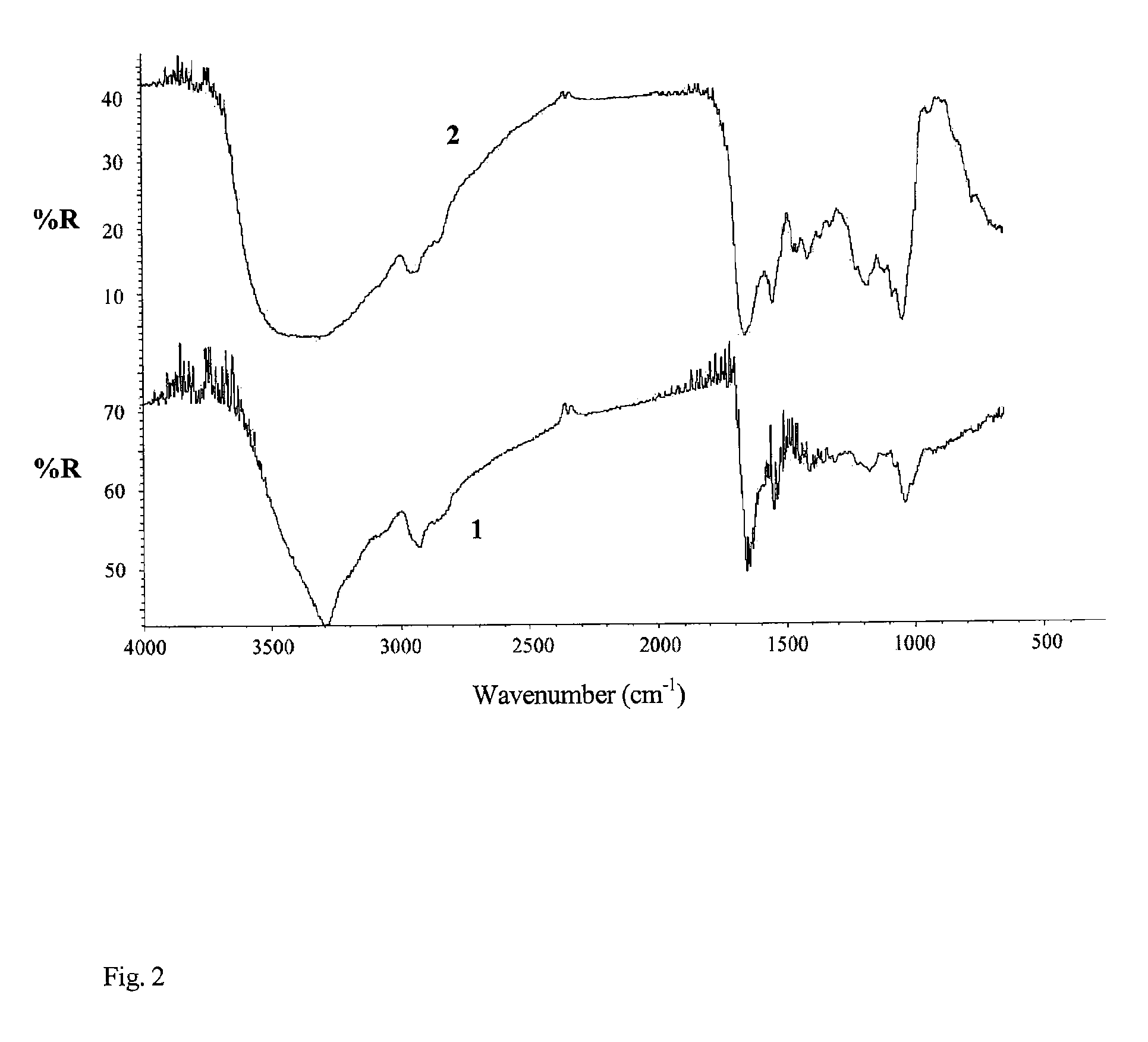Methods and systems for in-vitro analysis of biological cells and/or microorganisms
a technology of biological cells and microorganisms, which is applied in the field of infrared (ir) spectroscopy systems and methods for invitro analysis of biological cells and/or microorganisms, can solve the problems of inability to use pcr, and increase the cost of assay
- Summary
- Abstract
- Description
- Claims
- Application Information
AI Technical Summary
Benefits of technology
Problems solved by technology
Method used
Image
Examples
example 1
[0112]An infrared measuring FT-IR spectrometer Thermo Nicolet Nexus EURO was used to carry out the method of the invention. This is an IR measuring apparatus which already contains software for the measurement, evaluation—i.e. the Fourier transformation—and documentation as well as derivation of the absorption spectra recorded. The measurements were carried out in the spectral range of 4000-400 cm−1.
[0113]Cell suspension were coated onto the individual measuring points of the silver mirror (Thermo Spectra-Tech). After coating, these suspensions were left to dry at room temperature. The measurement was taken immediately after drying in a wavelength range from 400 to 4000 cm−1. Various parallel determinations were carried out for each sample.
[0114]Before the measurements the reference spectra of polystyrene standard (NIST standard) were recorded in order to prove working conditions of the equipment.
[0115]The spectra obtained for chondrocytes (1) and stomach cancer cells (2) are shown ...
example 2
[0117]In accordance with example 1, chondrocyte samples of a single (individual) cell and cell agglomerate just prepared were examined. The corresponding spectra are shown in FIG. 2.
[0118]Therefore, the invention provides a both simple and fast method for in-vitro analysis of biological cells and / or microorganisms characteristics selected from the group consisting of degree of differentiation, cell types, donor individuals, culture conditions, purity, lack of natural characteristic, additional characteristic in comparison to natural characteristics, and is therefore suitable for routinely checking cell preparations used in transplantation / graft medicine. One of the main reasons for that is that rapid, inexpensive analysis is possible with minimum sample amounts.
[0119]The present invention is not limited to the subject matter of the samples shown above. A person skilled in the art will recognize that modifications of the method of the invention are possible without leaving the protec...
example 3
[0120]In accordance with one embodiment, there is provided a method for in-vitro analysis of biological cells and / or microorganisms characteristics selected from the group consisting of: degree of differentiation, cell types, donor individuals, culture conditions, purity, lack of natural characteristic, or additional characteristics in comparison to natural characteristics. The method generally comprises the steps of:[0121](a) projecting infrared radiation on a sample of biological cells and / or microorganisms, said radiation including a selected number of wave-lengths;[0122](b) recording the spectral characteristics after interaction with said sample;[0123](c) deriving a Fourier transform infrared spectrum (FT-IR) from the collected spectral characteristics;[0124](d) generating the first or multiple derivative transformation of the FT-IR spectrum suitable for analysis in a computer;[0125](e) comparing said derivative with the derivative of a reference FT-IR spectrum determined earli...
PUM
 Login to View More
Login to View More Abstract
Description
Claims
Application Information
 Login to View More
Login to View More - R&D
- Intellectual Property
- Life Sciences
- Materials
- Tech Scout
- Unparalleled Data Quality
- Higher Quality Content
- 60% Fewer Hallucinations
Browse by: Latest US Patents, China's latest patents, Technical Efficacy Thesaurus, Application Domain, Technology Topic, Popular Technical Reports.
© 2025 PatSnap. All rights reserved.Legal|Privacy policy|Modern Slavery Act Transparency Statement|Sitemap|About US| Contact US: help@patsnap.com



